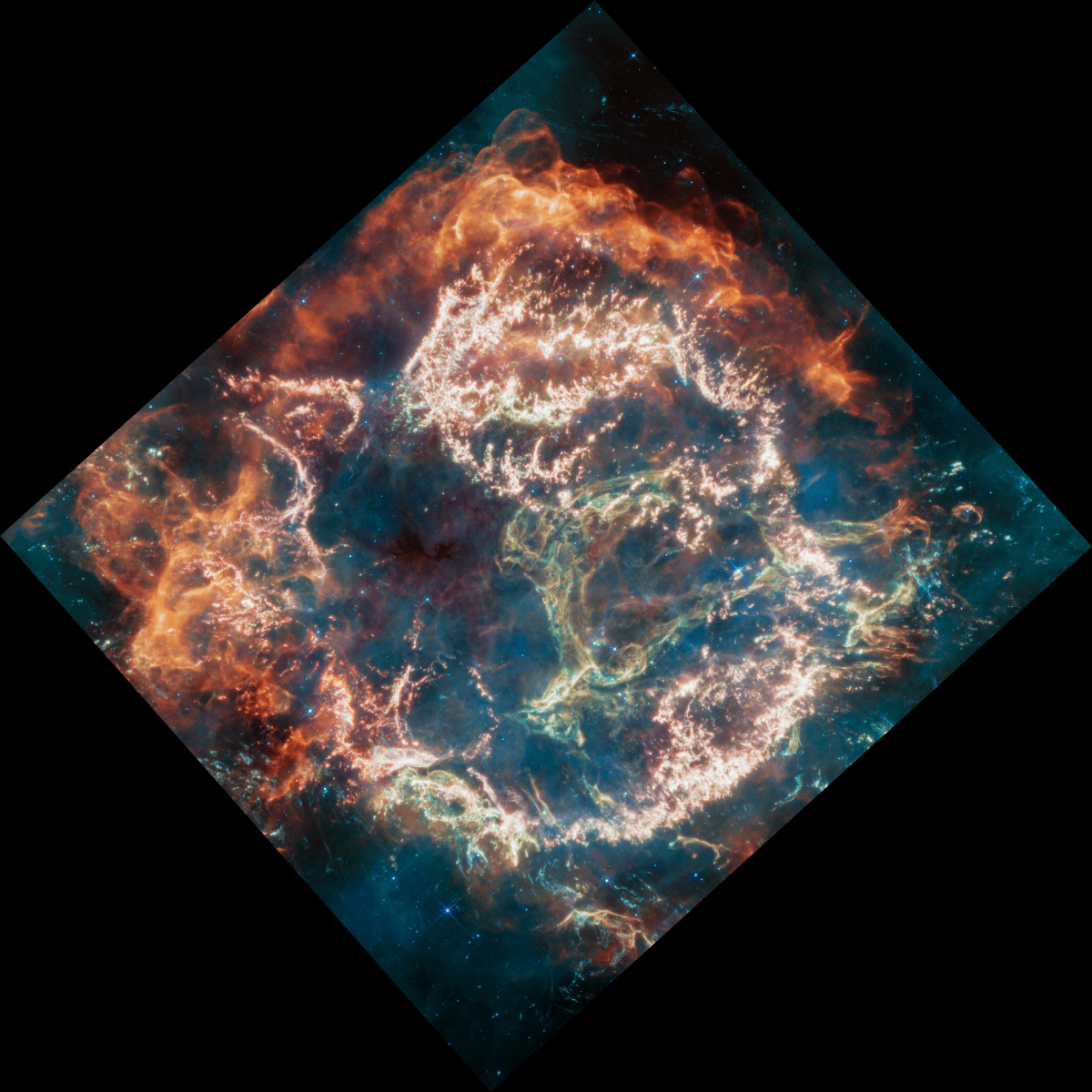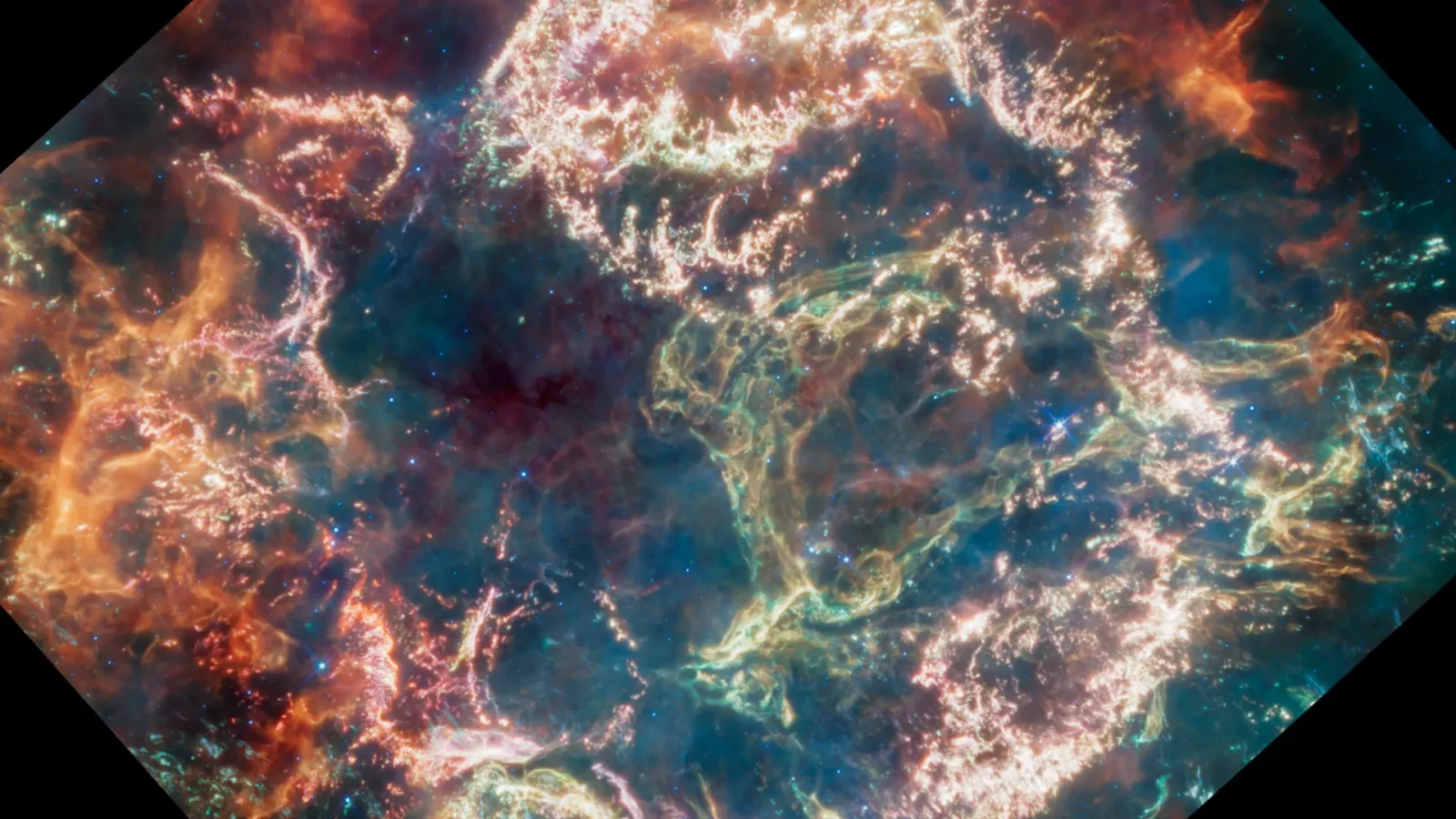The youngest known supernova part of the Milky Way, Cassiopeia A, had kind of a bloody past, as shown in new James Webb Space Telescope photos. It seems that once again, as the Universe unfolds right before our eyes, more pieces are waiting to be puzzled. JWST’s image shows the fragments of the supernova in vivid green, orange, and pink. What’s genuinely intriguing is how each hue actually represents a distinct wavelength of infrared light (non-visible to the human eye).
Researchers are now using the data to analyze what occurred before the unfortunate star perished. The results could really shed some light on some previous space discoveries. For instance, when asked about the discovery’s significance, Danny Milisavljevic, the main investigator of the Webb program and an assistant professor of physics and astronomy at Purdue University in Indiana, explained:
Cas A represents our best opportunity to look at the debris field of an exploded star and run a kind of stellar autopsy to understand what type of star was there beforehand and how that star exploded.
Check out below the incredible shot by JWST:

The most remarkable feature is a noticeable green filament that the researchers observe flowing around the bubble’s center hollow. They still don’t completely grasp the framework. Quite impressive, isn’t it?!
Astronomers are trying to study Cassiopeia A to find out more data about where the dust in the cosmos actually originates from. Also, how very old galaxies from the early Universe’s existence are so dusty. Supernovas are known as one of the sources of a lot of dust, according to astronomers’ data.
However, there are scientists who haven’t been able to pinpoint the exact origin of all the dust seen in the early cosmos. Luckily, JWST’s work will prove once again its skills and bring the necessary information to aid researchers worldwide!












Leave a Reply